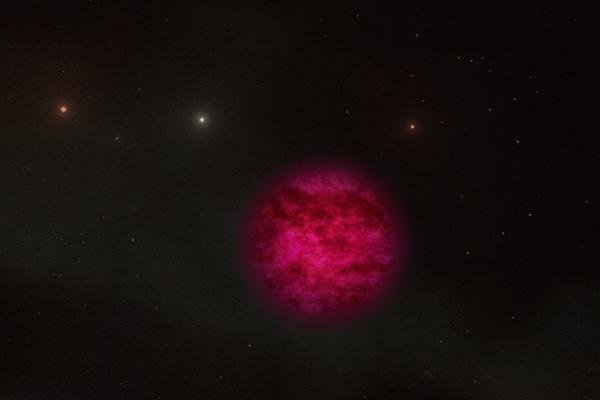Astronomy professor's research advances technology looking for signs of alien life

Thousands of exoplanets have been detected so far. Each has its own unique characteristics.
Assistant Professor of Astronomy Ji Wang’s goal is to study the traits of those exoplanets, or planets outside the solar system, to determine which have the best potential for harboring life.
Recently, Wang and a team of astronomers and astrophysicists utilized high-dispersion spectroscopy — a technique that includes use ground-based telescopes to detect molecular compounds in planets’ atmospheres — to analyze the atmosphere of HR 8799 c, a gaseous exoplanet in the Pegasus constellation, approximately 129 light-years away.
The team confirmed HR 8799 c’s atmosphere contained water but lacked methane. Though previous studies of the planet’s atmosphere produced similar findings, Wang and his team’s technique yielded stronger data, demonstrating the ability to better analyze another planet’s atmosphere and classify its molecular contents in wavelengths that are sensitive to biosignatures such as water and methane. This proof of concept advances the study of exoplanets and is key to finding signs of life elsewhere in the universe.
Wang is the lead author of a paper on the findings recently selected for publication in The Astronomical Journal. Co-authors include researchers from the California Institute of Technology; the University of California, Santa Cruz; Harvard University; and the University of Montreal.
“Although there’s room for improvement and more milestones to hit, being able to study the atmosphere of a planet in these wavelengths (around 3.5 microns) is a big step forward,” said Wang, who recently came to Ohio State following work as a postdoctoral scholar at the California Institute of Technology. “The next step is to apply it to targets more similar to Earth.”
Several questions need to be answered before determining if life on another planet is possible. Is it a rocky planet? Are there biosignatures such as water? Is the atmosphere suitable for maintaining life?
In this instance, Wang is interested in detecting biosignatures — signs of water and methane — in exoplanet atmospheres. Though HR 8799 c is an unlikely candidate to harbor life, the exoplanet, which is 20 to 30 percent larger than Jupiter, was a big and easy target to study.
The team used a high-dispersion spectrograph at the Keck Observatory in Hawaii to disperse light shining through HR 8799 c’s atmosphere into different wavelengths. As the light travels through a particular molecule species in the atmosphere, it leaves an imprint. The scientists examined these imprints to determine what that particular molecular compound was.

The Keck Observatory, a two-telescope observatory near the summit of Mauna Kea in Hawaii.
Now that Wang and his team successfully used the technique to ascertain the substance of HR 8799 c’s atmosphere, the same method can be used to examine other, more Earth-like planets. Studying the atmosphere of a smaller planet, however, means studying a weaker signal. Overcoming that obstacle, Wang says, necessitates a bigger telescope, as well as more advanced instruments and data-reduction techniques.
These next steps are being undertaken. The next generation of ground-based telescopes, which are three times larger than the telescope used to observe HR 8799 c, are being built; Wang and his team are developing new, more sensitive instruments; and Wang is collaborating with modelers to optimize and improve data analysis.
“For all these steps, we have plans to meet the challenge,” Wang said. “That, hopefully, will lead us to the ultimate goal of finding signs of life on another planet.”
.dailypost {background-color:#000; padding:30px;color:#fff;font-family:"capita";font-size: 1.25em;font-weight: 400;} .clicktotweet {float: right; text-align:right;}
Astronomy Prof. Ji Wang was involved in a study that demonstrates the ability to better analyze exoplanets. #ASCDaily
